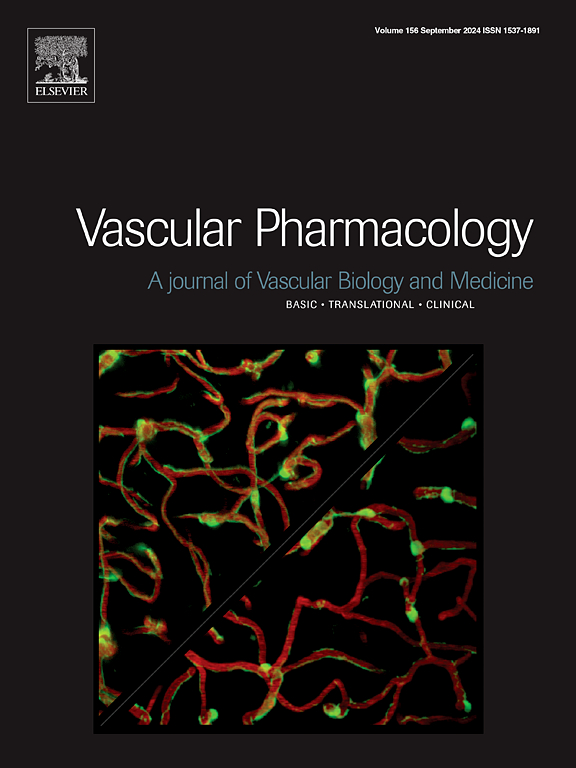基于神经酰胺的风险评分:用于高尿酸血症和痛风患者心血管风险分层的新型实验室工具
IF 3.5
3区 医学
Q2 PHARMACOLOGY & PHARMACY
引用次数: 0
摘要
痛风和高尿酸血症增加心血管疾病的风险,强调需要改进风险分层。在这项初步研究中,我们评估了94名高尿酸血症患者和196名痛风患者以及53名对照组的冠状动脉事件风险测试(CERT)。采用液相色谱-质谱法测定血浆中神经酰胺。与对照组相比,高尿酸血症患者的CERT评分(≥7)升高的比例为11.7%(2倍增加),痛风患者为31.12%(5.5倍增加)。此外,CERT升高的高尿酸血症和痛风患者也表现出更高水平的炎症和血浆动脉粥样硬化指数,这两者都与CERT显著相关。将CERT纳入常规护理可以增强风险分层,并指导该患者群体的靶向干预。本文章由计算机程序翻译,如有差异,请以英文原文为准。

Ceramide-based risk score: A novel laboratory tool for cardiovascular risk stratification in hyperuricemia and gout
Gout and hyperuricemia increase cardiovascular disease risk, highlighting the need for improved risk stratification. In this pilot study, we evaluated the Coronary Event Risk Test (CERT) in 94 hyperuricemic and 196 gout patients, and 53 controls. Plasma ceramides were determined by liquid chromatography–mass spectrometry. Elevated CERT scores (≥7) occurred in 11.7 % (2-fold increase) of hyperuricemic and 31.12 % (5.5-fold increase) of gout patients compared to controls. Additionally, both hyperuricemic and gout patients with increased CERT also exhibited higher levels of inflammation and atherogenic index of plasma, both of which were significantly associated with CERT. Incorporating CERT into routine care may enhance risk stratification and guide targeted interventions in this patient population.
求助全文
通过发布文献求助,成功后即可免费获取论文全文。
去求助
来源期刊

Vascular pharmacology
医学-药学
CiteScore
6.60
自引率
2.50%
发文量
153
审稿时长
31 days
期刊介绍:
Vascular Pharmacology publishes papers, which contains results of all aspects of biology and pharmacology of the vascular system.
Papers are encouraged in basic, translational and clinical aspects of Vascular Biology and Pharmacology, utilizing approaches ranging from molecular biology to integrative physiology. All papers are in English.
The Journal publishes review articles which include vascular aspects of thrombosis, inflammation, cell signalling, atherosclerosis, and lipid metabolism.
 求助内容:
求助内容: 应助结果提醒方式:
应助结果提醒方式:


